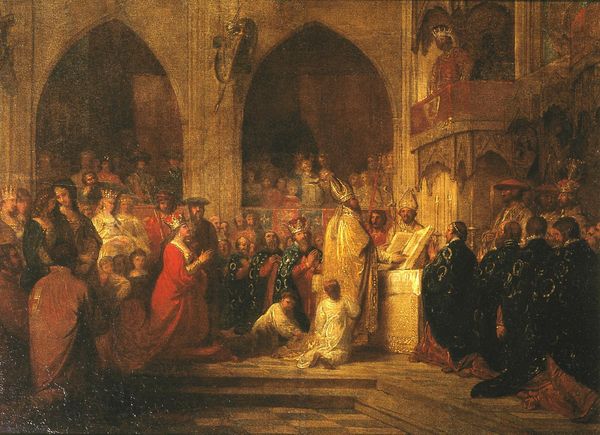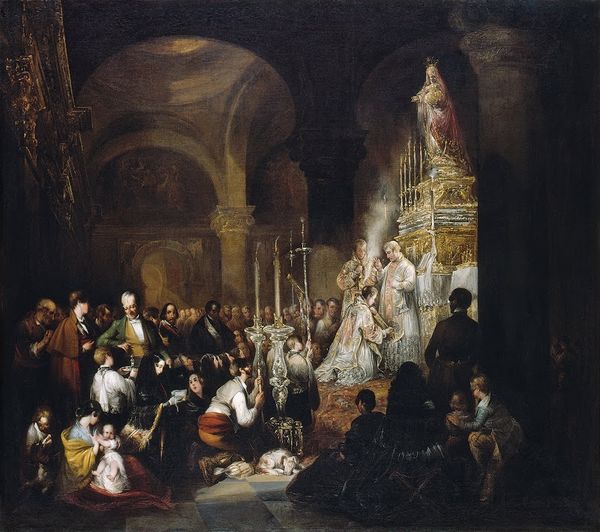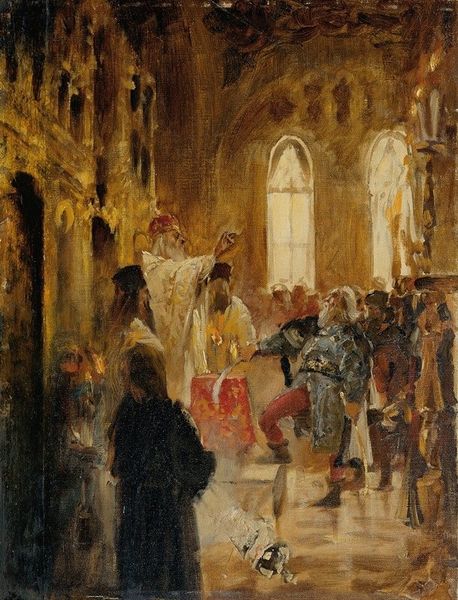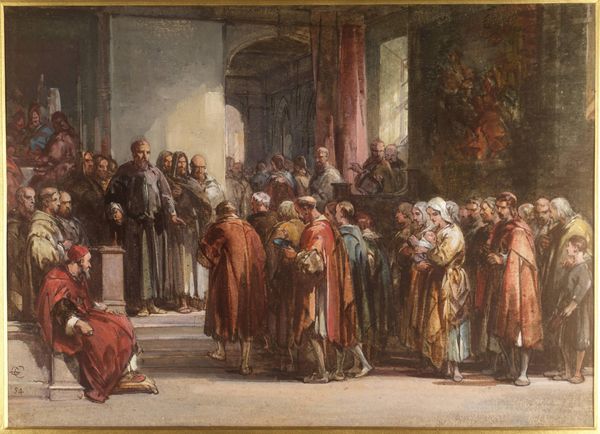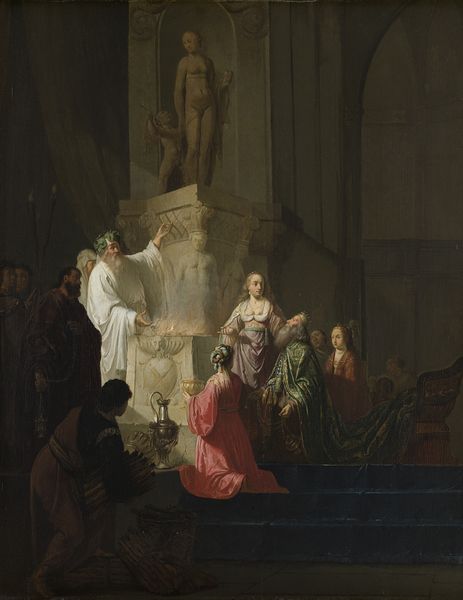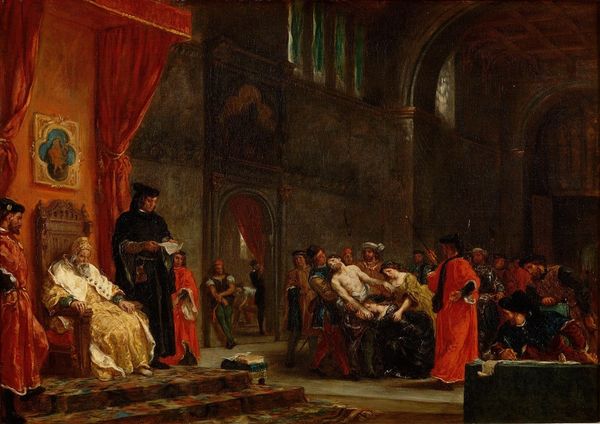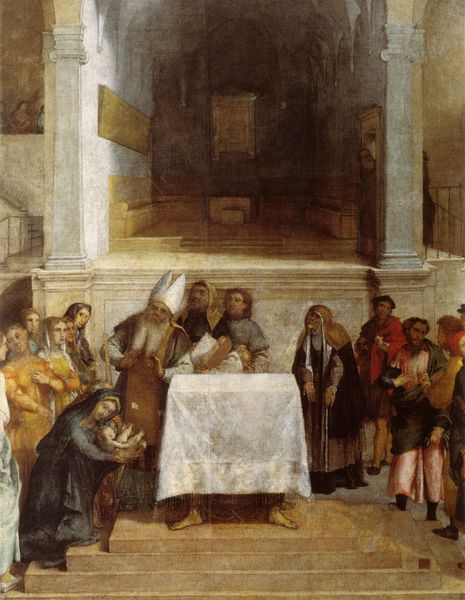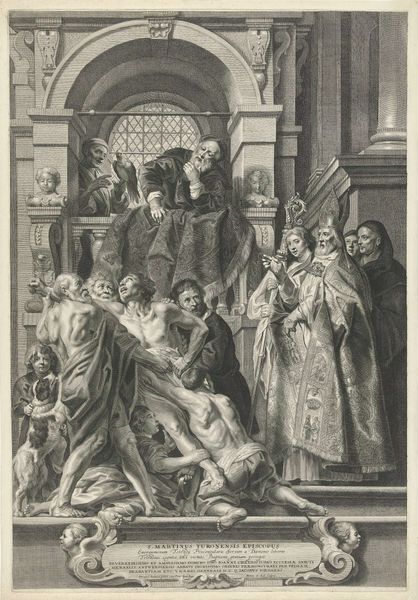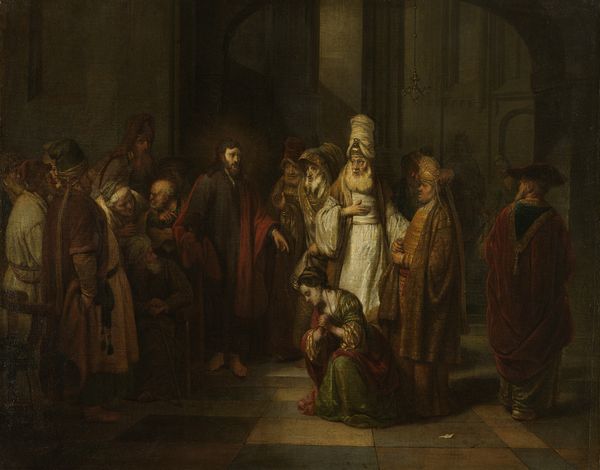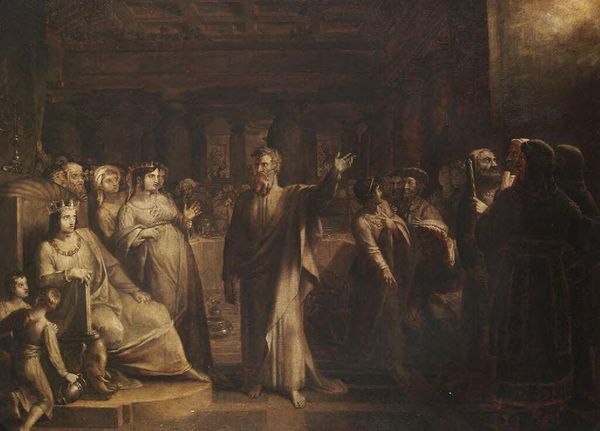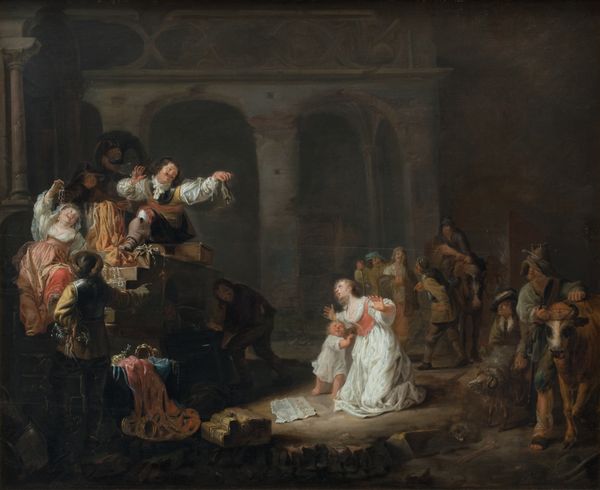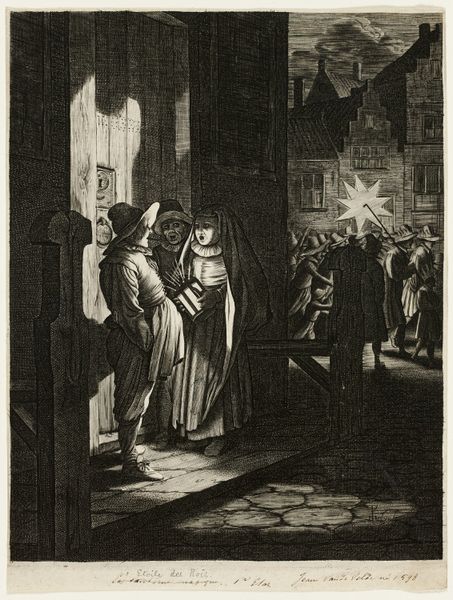
The Wedding of Jacoba of Bavaria, Countess of Holland, and Jan IV, Duke of Brabant, 10 March 1418 1839
0:00
0:00
oil-paint
#
gouache
#
oil-paint
#
painted
#
romanticism
#
genre-painting
#
history-painting
#
academic-art
#
watercolor
Dimensions: height 166 cm, width 132 cm
Copyright: Rijks Museum: Open Domain
Editor: This is Jacob Joseph Eeckhout's "The Wedding of Jacoba of Bavaria and Jan IV," painted in 1839. It looks like an oil painting. The muted colours give it a serious, almost melancholic feel, despite depicting a wedding. All those faces crammed in! What are your thoughts on this piece? Curator: The imagery carries considerable historical weight, doesn’t it? Weddings, especially those of nobility, are powerful symbols. Eeckhout, working in the Romantic style, isn't just showing us a historical event; he's tapping into our cultural memory of power, dynasty, and ceremony. Note the towering architecture, meant to inspire awe and reflect the divine sanction of the union. Do you notice how the figures seem almost secondary to the space itself? Editor: Yes, it's like the church is a character in the painting, witnessing and legitimizing everything. What about the angel statue up high? Curator: The angel is a fascinating detail. It bridges the earthly realm with the spiritual, acting as a silent witness and perhaps even a divine blessing. Think about the symbolism – angels often represent guidance, protection, and messengers from God. Its presence infuses the scene with a sense of destiny. Eeckhout uses it to subtly elevate the scene beyond a mere historical record, suggesting a cosmic significance. Editor: I hadn't thought about the angel that way, very interesting! It definitely adds another layer of meaning. I was so focused on the historical aspect of the painting that I missed the bigger picture. Curator: Art invites us to weave narratives. We see the surface, a historical painting, and beneath that, the echoes of symbolic language connecting us to the past.
Comments
No comments
Be the first to comment and join the conversation on the ultimate creative platform.
